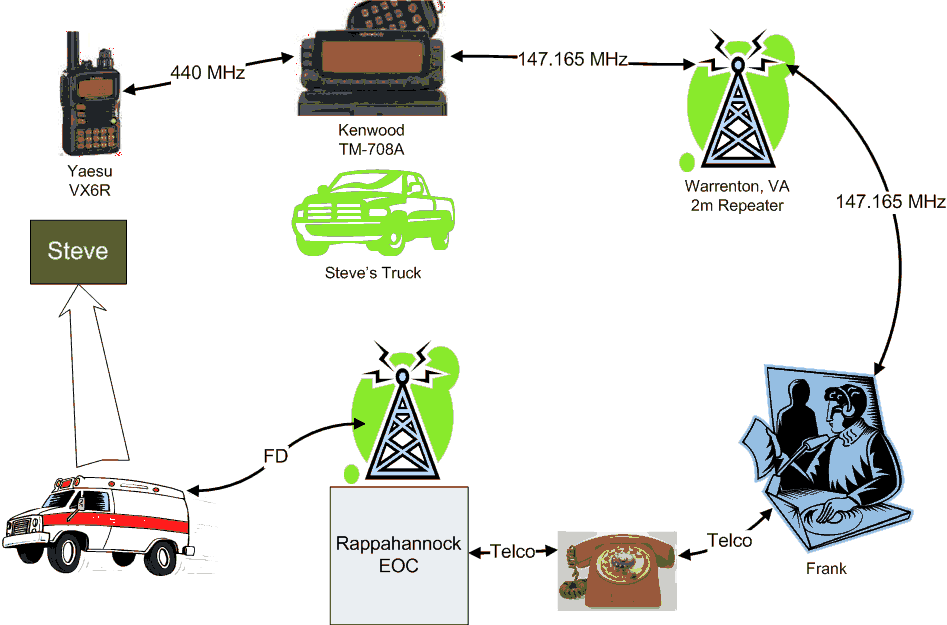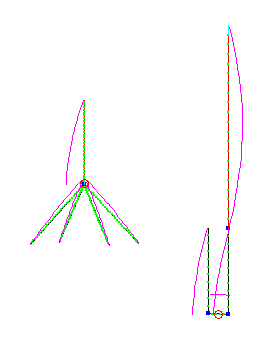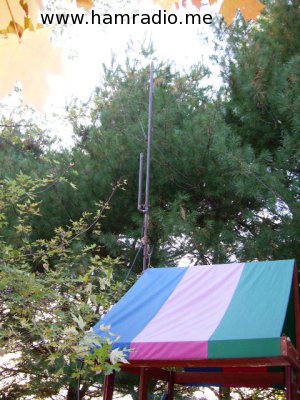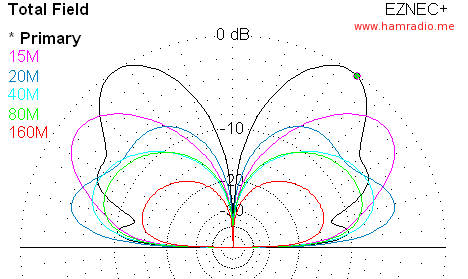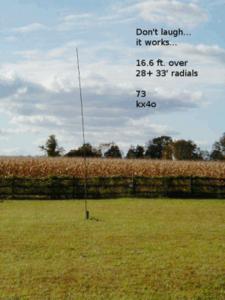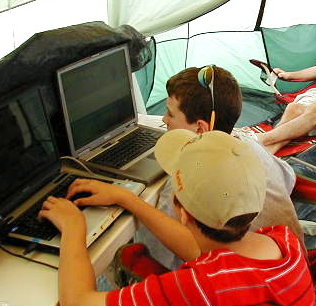A fellow named Mel gave me permission to share his elegant method to locate the end of the copper tape in SteppIR antennas. The position of that tape needs to be known occasionally during maintenance. To quote…
Amateur Radio License Plates

You studied.
Your forked over $13 to take the test (some VEs charge nothing… shop around). Perhaps you forked over another $13 for another chance… It happens.
…and…
Ham Saves Self with HT While Hunting
Ham radio enhances hunting safety by bringing assistance to injured hunter using cross band repeat.
1/4 Wave Monopole vs. 1/2 Wave J-Pole EZNEC Shootout
Myths abound concerning how J-Poles do so well. Here is an EZNEC shootout between a 2 meter J-Pole and a Monopole with radials.
Turning AGC Off Helps Kenwood TS-2000 CW
A ham on the local Sunday Night Tech Net reported a technique that improved the reception of CW measurably.
He has a Kenwood TS-2000 transceiver. As time went by he used various adjustments while listening to CW. He was never quite satisfied with the noise levels that came in along with the desire CW signals. Variables adjusted include the RF Gain and AGC response time.
Icom 746 & 725 Rig Control with N3FJP
A reader asks for help with rig control interfacing to an Icom 725.
Copper J-Pole Antenna on Play Set
Can a 2 meter J-Pole antenna work well on a child’s playset? Read and find out.
43 Foot Vertical and Coax Switches
Furthering the discussion of the 43 foot vertical antenna I wanted to report a concern I have with this antenna and the use of any relay based coax switch.
If you install a 43 foot vertical in your back yard, route the coax through a switch and handle the tuning inside your ham shack, you need to ensure you do not exceed the voltage or current limits of the relays in the switch.
Heil BM-10 Headset Review

Headsets are an excellent accessory for your amateur radio station. There are so many to choose from it might seem overwhelming to pick one. They come in large sizes to small and work with some radios while not with others. This is a description of the process I used to select my headset in the hopes it will help others decide if, when and which headsets they should consider.
Radio Station Layout Examples
There is no better way to think of ways to organize your ham shack than to see how others organize theirs.
The 43 foot vertical – The answer to everything?
The 43 foot vertical antenna is a popular height being promoted by several antenna manufacturers for 160 to 10 meters. Let’s see why and examine some advantages and pitfalls.
Low Profile Vertical HF Antenna
With the upcoming solar cycle pushing operations on the HF bands towards success on 20 meters to 10 meters you might be wondering if a vertical antenna may be the right choice for making the most of this time.
Well, to be honest you may well have just as much success with a simple horizontal dipole strung up.
Dipoles are pretty easy to build and don’t cost too much if you would rather purchase one from Alpha-Delta or the Wireman.
However, if you…
Your First CW Contact
FISTS and other amateur radio organizations exist to help you become proficient at CW and get you past your terrifying first CW QSO.
CW Common Abbreviations
As you begin your adventure sending and receiving Morse code on the HF bands you will almost instantly hear a variety of short hand abbreviations. Many are obvious while others aren’t.
CW works well with these abbreviations and may even lend themselves to cell phone text messaging since both systems benefit from sending fewer characters.
Two radios on one power supply cause problem
A viewer has a problem powering two radios from one power supply.
This situation is quite likely very common among amateur radio operators who keep a simple shack set up with one large power supply feeding multiple loads.
Lightning Protection using Relays
The topic of lightning protection of our radio equipment and everything else in our homes wisely comes up often in the various ham related email lists on the Internet.
A particular thread on one of these lists spoke of ways to disconnect coax, rotator control lines, etc. at or near where they come into the building. One implementation described by some fellow used relays to disconnect things so he could through one switch and instantly isolate his radios from the antennas.
Burt on Operators
An amusing video is on YouTube describing the state of affairs of ham radio and its operators.
Note the shifty, or perhaps thoughtful, eyes of Burt.
Choke Baluns
The topic of balanced to unbalanced converters is broad, detailed and deserving of study to apply them where needed. However, this post will discuss the simplest balun of all… the Choke Balun.
Many balun designs convert impedances 1:1, 1:2, 1:4, 1:9 and up.
DX Engineering 8 Port RF Coax Switch Review
A close look at the DX Engineering RR8-HP eight port coax switch with lots of pictures including interior views.
SWR vs. Return Loss
If you are fortunate enough to have equipment to measure return loss of your antenna system here is a chart that will convert the return loss in dB to SWR…
80 Meters for BigIR
The BigIR antenna from Fluid Motion looks like a winner, but there are some concerns about the 80 meter option.
Young Attracted to PSK31
During Field Day 2008 we carefully observed what operating modes the young teens did and did not enjoy while they operated. Without a doubt the digital modes, especially PSK31, got their attention.
The older of the two, KJ4FAJ, in the picture above said this when he made his first PSK31 contact just after midnight during Field Day…
Long HT Antennas May Harm HT Radios
If you are like many recently licensed Amateur Radio operators your first purchase may well be a good Icom, Kenwood, Yaesu or other brand Handy-Talkie or HT two way radio. These are most frequently for the 2 meter and 70 centi-meter bands (144 and 440 MHz).
The antenna that comes with your radio is probably about 8 inches long and is a compromise between convenient length and performance.
Unruly Tube Amplifiers
For those of you preparing to take the plunge into QRO power for your ham shack, you are advised to take an hour and read this web site…
